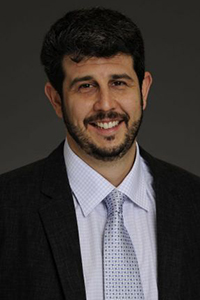Magnetic Seizure Therapy (MST) Shows Promise as Possible Alternative to ECT for Reducing Major Depression and Suicidality
Magnetic Seizure Therapy (MST) Shows Promise as Possible Alternative to ECT for Reducing Major Depression and Suicidality

A Toronto-based research team that includes four BBRF grantees is exploring magnetic seizure therapy (MST) as a potential alternative treatment to electroconvulsive therapy (ECT). The team has just published its latest assessment, regarding MST’s effectiveness in reducing suicidal thoughts and behaviors.
ECT, which has evolved substantially since its introduction in 1938, has proven very effective for the relief of major depression symptoms and suicidal behavior in patients who have failed to respond to antidepressant medications—enabling 40% to 70% to achieve remissions which often last for months. However, fewer than 1% of such patients, considered “treatment-resistant,” actually receive ECT, note the Toronto researchers, who were led by Z. Jeffrey Daskalakis, M.D., Ph.D., of the Centre for Addiction and Mental Health and the University of Toronto.
ECT is sometimes accompanied by short-term memory loss, and for this reason it is often avoided, explain Dr. Daskalakis and his colleagues, including Daniel Blumberger, M.D., a 2010 BBRF Young Investigator, Paul Fitzgerald, M.D., Ph.D., a 2005 and 2003 BBRF Young Investigator, and Tarek Rajji, M.D., a 2010 BBRF Young Investigator.
For this reason, in recent years the Toronto team has been testing MST as a possible alternative to ECT. MST, like ECT, is delivered while the patient is under general anesthesia. In MST, a brief seizure, lasting less than a minute, is induced by a device placed above the skull that briefly delivers magnetic pulses.
Last fall, the team reported in the journal Neuropsychopharmacology on MST results in alleviating depression symptoms in 86 refractory MDD patients, and they have just followed up in JAMA Network Open/Psychiatry with a “secondary analysis” of the same patients, assessing how effective MST was in treating suicidality.
In their paper on depression, the team said that “MST was associated with a significant reduction in depressive symptoms in patients with MDD.” Three subsets of trial participants received MST at three frequencies—low, medium and high—delivered two or three times per week until patients either achieved remission or completed 24 treatments.
High-frequency MST produced the largest response rate (42%--defined as symptom reduction of at least 50%); and also the highest rate of remissions (33%--a 60% or greater reduction sustained at two or more follow-ups). The typical time to MDD remission was about 16 sessions. Importantly, participants received careful cognitive assessments following the trial. Performance on most measures “remained stable.” The only impairment noted was worsened recall consistency of autobiographical information which the team said was likely unrelated to the treatment. Visual-spatial memory was actually enhanced after MST treatments, on average.
The team’s new paper extends the findings of the trial to the question of whether MST is able to compare with ECT in reducing “suicidality,” which includes both suicidal thinking and actions. Of the original 86 trial participants, 67 had some degree of suicidality when they were first assessed upon entering the trial. Working with this subset, Dr. Daskalakis and colleagues performed “secondary analysis” of the results.
Again, they were encouraged. 32 of the 67, or 48%, achieved remission from suicidality by the end of their participation in the trial. This fraction was higher among those who had received MST at low and medium frequencies (55% and 54%, respectively). In a further parsing of the results, the team reported that those who completed the full course of MST—i.e., the full set of 24 treatments or remission, if it came first—had 73% and 58% remission rates at, respectively, low and medium MST frequencies.
ECT, in a landmark assessment published in 2014, generated a 63% remission rate in suicidal symptoms, a result that the team says is comparable in magnitude to the MST results they achieved—with MST apparently having lower side-effect risk. But they made clear that the results are not directly comparable, as they were obtained in trials of different designs. The researchers are currently testing MST and ECT directly in a randomized, placebo-controlled trial in the hope of determining what their two MST-only trials seemed to suggest: that MST might be a safer, more acceptable alternative to ECT for treatment of resistant major depression and suicidality.
Interestingly, the two phenomena—major depression and suicidality—did not respond to MST in the same way. Treatments at low and medium frequency that worked best for suicidality were not optimal in treating major depression, in which the best results were obtained with high frequency MST. Better understanding the apparent independence yet frequent co-occurrence of depressive symptoms and suicidality is another object of the team’s ongoing research.



